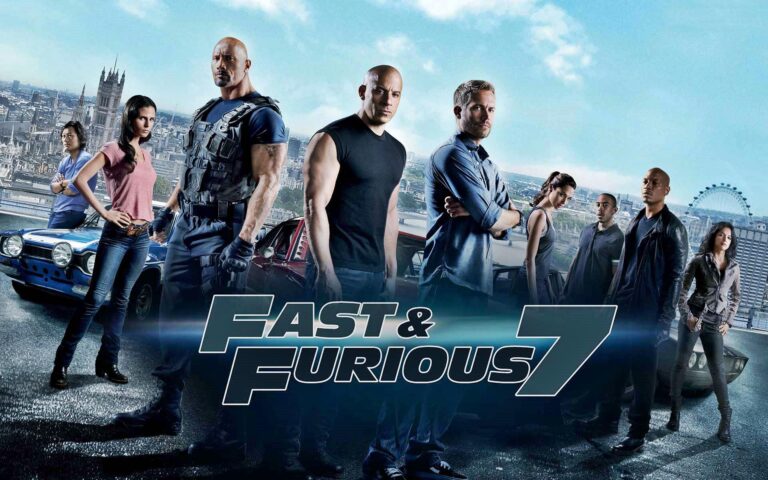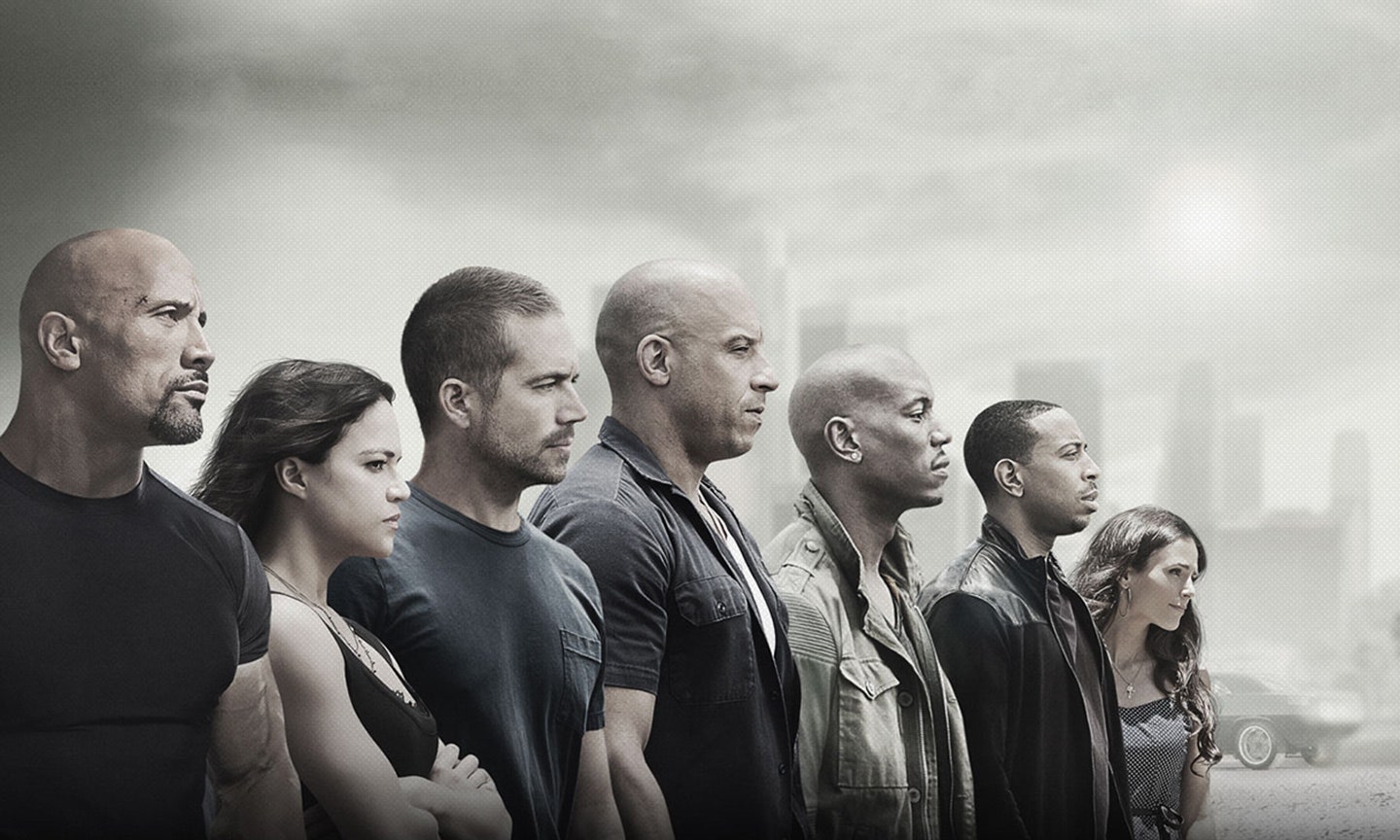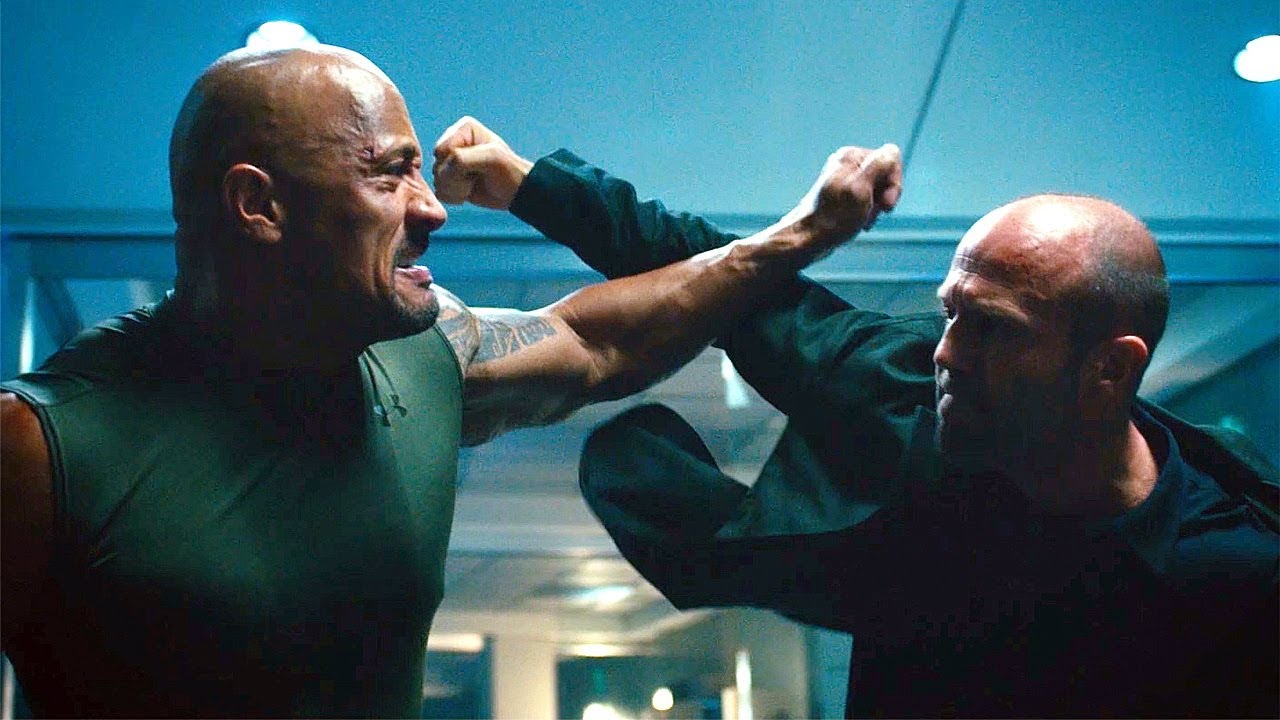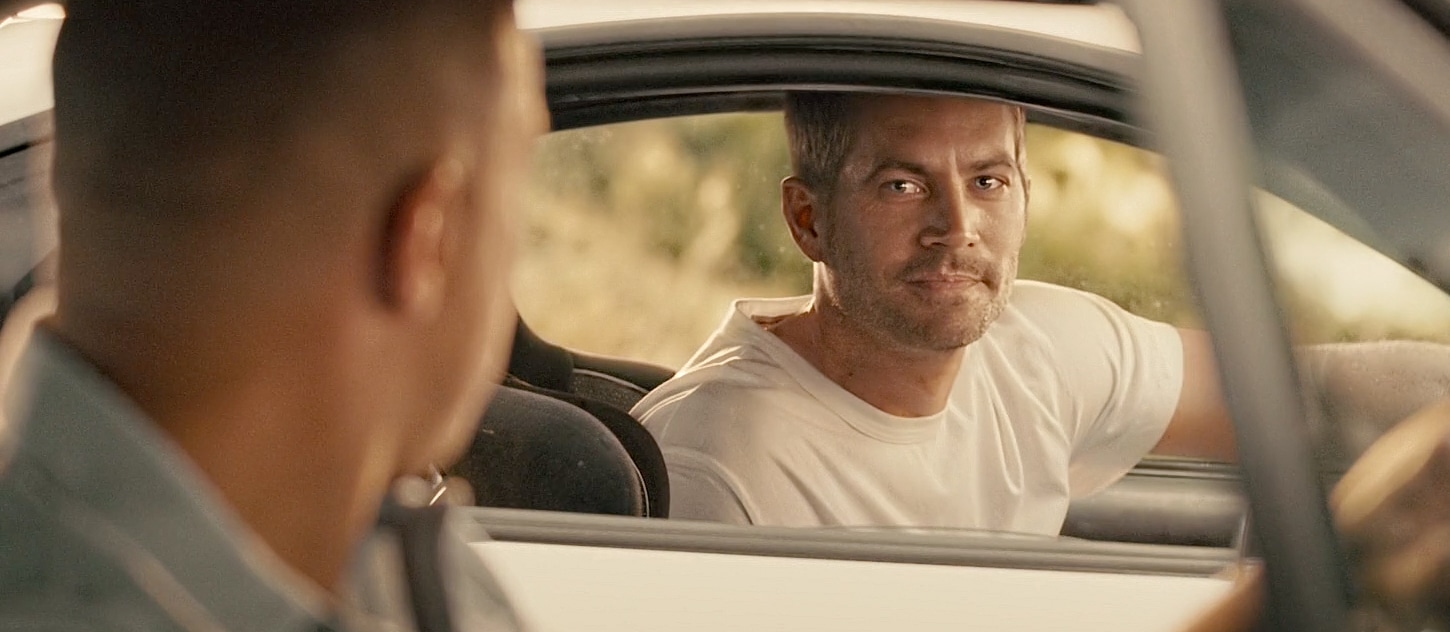
The Long and Winding Road: Chapter 7 – A Death in the Family

The franchise was on a roll. Articles featured in The Hollywood Reporter show that Vin Diesel planned for Fast & Furious 6 and 7 to be a two-parter. From the very beginning they knew Owen Shaw would go down and Deckard Shaw would come up. Universal wanted to fast track the two films back to back requiring Justin Lin to work on pre-production for 7 while in post-production on 6. Lin declined as his work would be affected by the heavy schedule. Universal, still competing with the superhero phenomenon, hired horror director James Wan (Saw, Saw II, Insidious) to finish out this story. Chris Morgan bridged the two directors as writer for both films.
Paul Walker passed away on November 30, in the middle of filming for the seventh installment of this now-Ultimate Action franchise. Not only did the cast and crew mourn his loss but the world did as well. Producer Neal H. Moritz circled the wagons, and along with series writer Chris Morgan and director James Wan plotted a new story for Brian O’Conner, one that would respect Paul Walker’s legacy while still offering the high octane action and levity of the franchise. They had to figure out how to mourn, the Fast and Furious way.
Furious 7 picks up where Fast & Furious 6 left off: Owen Shaw is in the hospital. His big bad brother, Deckard Shaw, wants revenge. Deckard starts by killing Han during the events of Tokyo Drift thus catching us all the way up to current times in the Fast universe. Meanwhile Letty Ortiz struggles with her amnesia. As Deckard Shaw ramps up in bloodlust, car bombing the original Toretto home, and Dominic and his crew get recruited by shadowy government agent “Mr. Nobody” played by Kurt Russell.
You’ve accidentally stepped into a bigger world of pawns and knights playing amongst the shadows, he tells Dom. You’re no longer just a street criminal. You’re involved in some secret spy action that the US government does not officially sanction. Just like that, Dom and his crew become super secret agents. Remember when these movies were about street racing?
It opens by catching up to “present continuity.” Han dies. Letty and Dom go back to Race Wars, the street racing scene from the first film. Brian O’Conner drives a minivan. Luke Hobbs approves a transfer for Elena. Those touchstones of the Fast saga are all there and yet the movie quickly abandons them for its two hour plot.
If you thought Fast & Furious 6 was a soap opera just wait until you hit Furious 7. Memory loss, forced retirement, secret government agencies fighting, a mysterious assassin, and a warlord bent on murder? It sounds ludicrous (nice) but those are just some of the conceits driving this film (also nice.)
What stings in this film is the general inconsistency of the movie: Letty leaves at the beginning, then comes back for the crew later. Deckard Shaw speaks a total of like fifty words in the entire movie, even though he’s the main villain. Mr. Nobody, while cheeky, gets to play fast and loose with his world-building. Ramsey, someone completely new to the group, trusts them even though she’s never met them. There are emotional beats that could take entire movies to develop but either get bluntly addressed (like the weird scene where Ramsey types every character as if that explains why she inherently trusts them) or treated and then subsequently forgotten (in the case of Deckard Shaw.) It’s poorly balanced in terms of character development and way too forced.
Read along on the rest of our Fast Saga coverage with these articles on the other Fast & Furious installments:
- THE LONG AND WINDING ROAD OF ‘THE FAST AND THE FURIOUS’ FRANCHISE
- 2 FAST 2 FURIOUS: EXPLORING THE SEQUEL THAT LAUNCHED AN ULTIMATE FRANCHISE
- AN ULTIMATE LOOK BACK AT ‘THE FAST AND THE FURIOUS: TOKYO DRIFT’
- FAST & FURIOUS: FROM UNDERGROUND STREET RACING TO MAINSTREAM ACTION
- THE INFLUENCE OF VIDEO GAME CULTURE ON THE FAST & FURIOUS FRANCHISE
- FAST FIVE: A NEW ULTIMATE HEIST FRANCHISE EMERGES
- FAST & FURIOUS 6: THE FAST SAGA GOES FULL SUPERHERO ACTION
- PAUL WALKER’S ULTIMATE LEGACY ABOUNDS IN ‘FURIOUS 7’ (2015)
- THE FAST FRANCHISE REACHES ITS FINAL FORM IN ‘THE FATE OF THE FURIOUS’ (2017)
- AN ULTIMATE LOOK AHEAD AT ‘FAST & FURIOUS 9’
- THE ULTIMATE RANKINGS FOR THE ‘FAST & FURIOUS’ FRANCHISE MOVIES
An Ultimate Menagerie of Villains

One of the biggest imbalances is the movie’s villains: Deckard Shaw and oh! Djimon Hounsou as Jakande. After nearly killing Luke Hobbs (and sidelining him for most of the movie) Deckard goes after Dominic Toretto and his crew for the attempted murder of his brother. Jakande wants “God’s Eye” a mystical tech device that can hack into anything with a camera and simultaneously track any human it’s told to track around the world. It’s a privacy killer and would be perfect for a warlord to hunt down his enemies. That’s all we’re given. That’s why they’re bad.
Deckard Shaw doesn’t get the murderous monologuing of his younger brother or really any characterization past the opening scene. There’s no oral confrontation between Dom and Shaw they mostly just ram cars at each other and duke it out with wrenches.
If Shaw is underutilized then Jakande is practically nonexistent. We don’t actually know (or remember) why he wants God’s Eye other than he’s a warlord. Djimon Hounsou is a fantastic actor with a plethora of action credits but Furious 7 does the cinematic equivalent of making him an insert character. They shot scenes of him just yelling at people to fire, or track Ramsey, or use God’s Eye and spliced them into the action. We don’t know why he’s evil and thus we don’t really care about him. We barely care about Deckard Shaw. Only Jason Statham’s bona fides as an Ultimate Action star help his character retain any value whatsoever as he flips, punches, and twists his way through battles with Hobbs or Toretto.
Furious 7 gets yet another turbo boost in terms of directing style. Where Lin opts to spin his camera around subjects Wan not only spins his camera he twirls it. His lightning cuts are too fast, entirely disruptive. Where Lin would continue in the same shot Wan shows it from six different angles. Even in slower, more emotional moments the camera lifts up on a crane or tilts ever-so-dutch.
Even more so the movie trades on needle drops way too much. There’s a needle drop for every establishing scene and another needle drop for action and a final needle drop when the action starts. All of these stylistic tools are Michael Bay-esque reminding us what happens when things are TOO hyperbolic, TOO fast.
Once again newcomers join the Fast Saga. This time Jason Statham, Ronda Rousey, Tony Jaa, Djimon Housou, Kurt Russell, and Nathalie Emmanuel propel the story forward. This flood of newcomers opens the gates even wider for international audiences and fans of certain actors join the Fast family. Jason Statham’s history as an Ultimate Action hall of famer speaks for itself. Ronda Rousey brought more women’s MMA to the franchise and only as a bit player (allowing her to focus on the fighting, not the acting.) Tony Jaa (Ong Bak) picks up the martial arts torch passed on from Joe Taslim. Kurt Russell’s a true Ultimate Action hero.
Nathalie Emmanuel (Game of Thrones) joins the Fast Family as Ramsey, the hacker. Her presence and addition as a techie hacker to the group shifts the dynamics of the supporting cast ever-so-slightly in several degrees. Without Gal Gadot and Sung Kang to counter the over-the-top Tyrese Gibson and Ludacris the movie feels unbalanced. Too much comedy. Too many one-liners. Too many pithy jokes.
While Emmanuel doesn’t quite provide that serious coolness the previous members did she still offers some counterbalance to the other protagonist’s. Unfortunately her character doesn’t get many scenes and her abilities as a tech genius question the importance Ludacris’ character Tej. In an odd, but still helpful rejiggering they find room for both hackers and give Tej a little fight scene to demonstrate he doesn’t only do computers. Emmanuel’s character is the only one in the crew not familiar with driving so her role falls mainly under support.
How to Honor Their Fast Fallen Star?

The great mystery of this movie is: How are they going to write off Paul Walker’s character? When they finally went into pre-production they had already shot plenty of scenes with him, they needed to rewrite his character to exit the franchise without dying in a car crash. Initially Australian company Weta began work on grafting Brian O’Conner into other scenes but the archive footage wasn’t thorough enough. Walker’s two brothers Cody and Caleb were used as stand-ins to fill in the gaps where he should be. This new cut becomes a sort of guessing game where the audience wonders if this is the moment where O’Conner bravely dies defending his family. Only on my third viewing of this film do I realize the methodology behind the reshoots.
Every emotional scene that Paul Walker is in are reshoots mixed with previously shot footage. Mia calls her husband Brian before the last big battle to tell him she’s pregnant. Brian replies that this last adventure may kill him. He urges to her take their child and move on if he doesn’t survive. He says goodbye and in a sad response Mia Toretto tells him: “Don’t say that. They way you said it, it’s like goodbye. Say something else.” This tees up the idea that any scene O’Conner’s in could be his last, teasing death and giving every stunt just a little extra tension. Wan carefully teases us each time: Will it be the bomb going off or the bus falling off a cliff? Which scene will require his noble sacrifice?. O’Conner’s inevitable departure from the franchise gives every stunt an extra sense of importance.
Instead, they retire O’Conner to a bleeding heart anthem. Arguably the most iconic piece of music written for the Fast Saga isn’t a rap song or latin EDM mix. It’s Charlie Puth’s soulful “See You Again (feat. Wiz Khalifa).” This potent song mixed with Diesel’s final narration gives us a satisfying conclusion. After the gang watches O’Conner play with his child on the beach they remember that nothing is more important than family. They all take a chance to say goodbye to O’Conner. Dominic, overwhelmed by emotions, takes off. Brian races after him.
Brian admonishes Toretto: “Thought you could leave without saying goodbye?” Mirroring our own words we want to impart on Paul. Vin Diesel narrates: “whether it’s a quarter mile away or halfway across the globe you’ll always be my brother.” And in that way not only do we get to say goodbye to Paul Walker but he gets to say goodbye to us. He takes a right turn where Dom goes straight and literally rides out of the franchise forever. Shoehorned or not, that scene provides closure for the world to mourn. It was so potent that actors on set reportedly cried during filming.
It feels crass to say but Furious 7 works significantly better than its predecessor in part due to Walker’s demise despite Wan’s hyperbolic directing. In much the same way that Heath Ledger’s death during The Dark Knight propelled audiences to catch the movie Paul Walker’s passing encouraged attendance for fans around the globe. The movie’s saving graces are the lingering question of writing out Brian O’Conner and the ridiculous stunts/fights.
Each movie fights to one-up its predecessor in terms of stunt work. Fast Five had the bank vault chase. Fast & Furious 6 had the airplane crash. Furious 7 has it’s airdrop. In an attempt to stop a convoy carrying Ramsey the crew drop out of the back of an airplane and parachute onto a highway deep in the Caucuses as part of their rescue. This seminal stunt piece anchors the film in its centerpoint as over-the-top as can be. Not even the “pass the football” final confrontation can top cars falling out of the sky.
The fight scenes, thankfully, go up another notch from the previous film. Michelle Rodriguez gets another nasty confrontation (this time against Ronda Rousey) in Dubai while Dominic Toretto squares off against Deckard Shaw multiple times. Brian squares off against Kiet (Tony Jaa) in a battle of speed and precision. The final fight between Dom and Shaw, while bonkers, plays fairly well. Dom wields two giant wrenches like he’s dual-wielding swords and Shaw whips around burned pieces of metal hacking and slashing.
It’s a bizarre street style sword fight with both men pounding the every-living daylights out of each other. At the very end Dominic gets another superhero moment when he stomps the ground and it opens up, swallowing Deckard Shaw, as if Dominc Toretto controls concrete. Only Shaw’s initial battle with Hobbs comes close to this kind of carnage. Dwayne Johnson employs several famous WWE moves on action legend Jason Statham. These fights keep the movie together with some down and dirty brawling.
The Long and Winding Road of ‘The Fast and the Furious’ Franchise
So, How Does Furious 7 Hold Up Today?
Furious 7 doubles down on so many of its elements it even doubles down on its male gaze. Amazingly where Fast Five and Fast Six felt leery Furious 7 ups the ante entirely. Not only does the camera swoop up and over Nathalie Emmanuel’s body in a bikini, but it slows over every hip and breast it can find. While the street racing in this movie lacks the mini-skirt clad crowd (sans the flag girl and one painful cameo from rapper Iggy Azalea) a party scene in Dubai gives Wan an opportunity to leer over underwear-clad models. This time the women are painted gold, made to look like literal objects. In previous installments the penetrating eye of the camera felt intrusive this one feels downright slimy. It starts its gaze right along the hip bone, gliding up the navel, and briskly skimming over the women’s chests; an entirely uncomfortable move.
The music of the film continues in its international tradition. It brings a blend of hip-hop and EDM together. The electronic party hit “Get Low” by Dillon Francis and DJ Snake provide energy for the party scenes. “Go Hard or Go Home” by Wiz Khalifa feat. Iggy Azalea give the opening credits a strong hip-hop beat. Ironically it would be Charlie Puth’s sadboy single “See You Again” that would gain the most notoriety. Whether because of it’s association with Paul Walker or because of it’s impressive musical notation the song was nominated for Best Original Song at the 73rd Golden Globe awards and became the radio hit of the summer underscoring high school graduation season for an entire generation.
There are lots of things to enjoy about Furious 7 but careful inspection reveals a mismanagement of parts that has nothing to do with the loss of Paul Walker. Despite providing brief reasoning for the villains the movie wastes Jason Statham and Djimon Hounsou. Dwayne Johnson sits out all but the finale of the film. The stunts are bigger and rock harder, but the editing feels too quick. Needle drops abound entirely too much despite the electrifying music and the camera leers over women’s bodies in an extremely uncomfortable way.
The addition of Kurt Russell and Nathalie Emmanuel work in terms of generating more plot by pulling back the curtain even further. All told Furious 7 cost $190 million to make and earned $1.515 BILLION dollars in global box office. It found a place among the record-winning earners of the franchise industry all while helping a planet mourn the loss of the most earnest and kind underrated action stars of a generation and turn over a new chapter of the Fast Franchise.